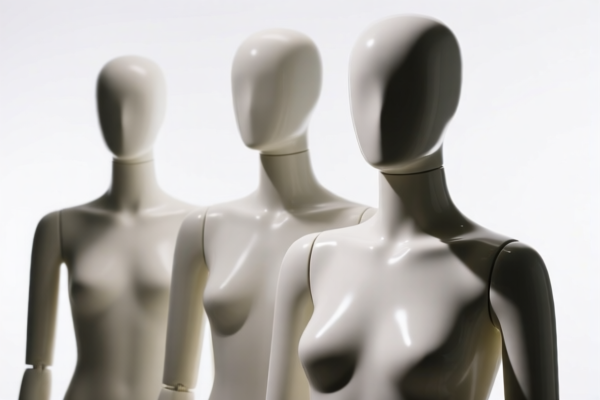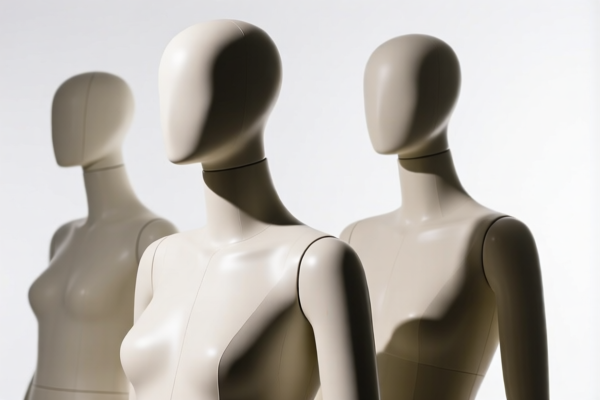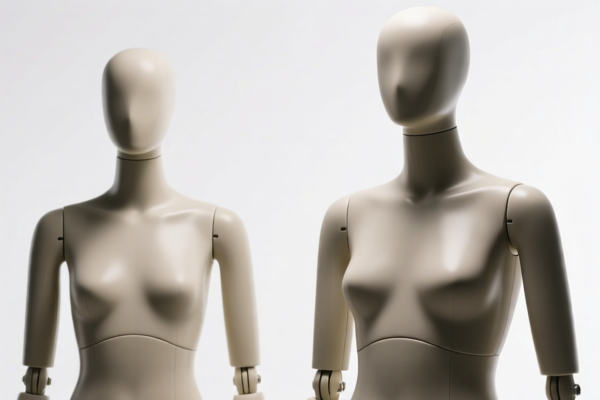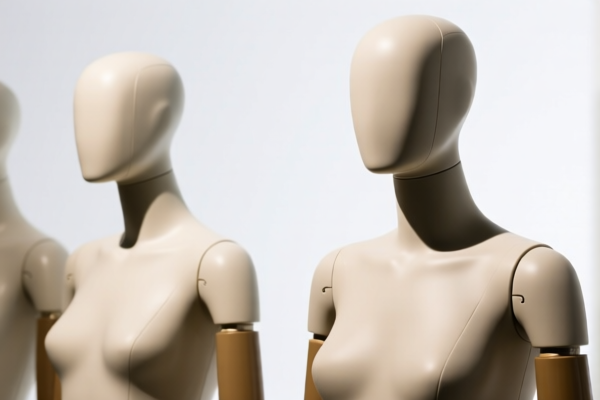| HS Code | Official Doc | Tariff Rate | Origin | Destination | Effective Date |
|---|---|---|---|---|---|
| 9503000090 | Doc | 30.0% | CN | US | 2025-05-12 |
| 9503000071 | Doc | 30.0% | CN | US | 2025-05-12 |
| 6815994170 | Doc | 55.0% | CN | US | 2025-05-12 |
| 3926901000 | Doc | 40.9% | CN | US | 2025-05-12 |
| 3926909989 | Doc | 42.8% | CN | US | 2025-05-12 |
| 3901901000 | Doc | 55.0% | CN | US | 2025-05-12 |
| 3901905501 | Doc | 61.5% | CN | US | 2025-05-12 |
| 3914006000 | Doc | 58.9% | CN | US | 2025-05-12 |
| 3914002000 | Doc | 55.0% | CN | US | 2025-05-12 |
| 9618000000 | Doc | 41.9% | CN | US | 2025-05-12 |




TPE Mannequins
TPE stands for Thermoplastic Elastomer. TPE mannequins are a type of display form utilized in a variety of retail and personal contexts, distinguished by their material composition and resulting properties.
Material
The core characteristic of TPE mannequins is their construction from thermoplastic elastomer. This material is a rubber-like plastic with both thermoplastic and elastomeric properties. Key features of TPE include:
- Flexibility: TPE is highly pliable and can bend and stretch, offering advantages in posing and handling.
- Durability: While flexible, TPE is relatively resistant to tearing and abrasion.
- Recyclability: Many TPE formulations are recyclable, making them a more environmentally conscious choice than some traditional mannequin materials.
- Skin-like Texture: TPE can be formulated to closely mimic the texture and feel of human skin.
- Cost-Effectiveness: Generally less expensive than silicone mannequins.
Purpose
TPE mannequins serve primarily as display forms for:
- Clothing Retail: Showcasing apparel in store windows and on sales floors.
- Fashion Design: Draping and fitting garments during the design and prototyping process.
- Cosmetology Training: Practicing makeup application, wig styling, and other beauty techniques.
- Personal Use: Displaying or storing clothing items privately.
- Artistic Applications: Sculptural or illustrative purposes.
Function
The primary function of TPE mannequins is to provide a realistic human form for visualizing and presenting clothing or practicing skills. Specific functions include:
- Visual Merchandising: Enhancing the aesthetic appeal of retail displays.
- Fit Assessment: Demonstrating how clothing drapes and fits on a human-like shape.
- Skill Development: Providing a consistent and reusable platform for practicing cosmetology or fashion techniques.
- Storage/Organization: Maintaining the shape of clothing items when not in use.
Usage Scenarios
- Retail Stores: Window displays, in-store promotions, seasonal exhibits.
- Fashion Studios: Garment fitting, pattern making, design visualization.
- Cosmetology Schools: Makeup training, wig styling practice, skincare demonstrations.
- Private Homes: Displaying favorite outfits, organizing wardrobes.
- Trade Shows/Events: Showcasing clothing collections or design portfolios.
Common Types
TPE mannequins are categorized based on several factors:
- Full Body vs. Torso: Full body mannequins represent the entire figure, while torso mannequins focus on the upper body.
- Male vs. Female vs. Child: Different body shapes and sizes to represent various demographics.
- Posable vs. Non-Posable: Posable mannequins have articulated joints allowing for dynamic poses, while non-posable mannequins have a fixed stance.
- Head Options: Available with or without heads, and with various head styles (e.g., realistic, abstract).
- Base Type: Different base designs (e.g., round, square, adjustable) for stability and display options.
- Skin Tone: Available in a range of skin tones to represent diversity.
- Realistic vs. Abstract: Some mannequins are designed to closely resemble human anatomy, while others have a more stylized or artistic appearance.
TPE mannequins fall under the category of mannequins used for shop window dressing or display purposes.
Here are the relevant HS codes based on the provided reference material:
- 9618.00.00.00: Tailors' dummies and other mannequins; automatons and other animated displays used for shopwindow dressing.
- 96: Miscellaneous manufactured articles. This chapter covers a wide range of products not specifically classified elsewhere.
- 18: Professional equipment; this heading specifically covers tailors' dummies, mannequins, and related display items.
- 00.00.00: This subheading denotes the specific classification for tailors' dummies and mannequins.
Regarding HS code 9618.00.00.00, please note a basic customs tariff of 4.4% and an additional tariff of 7.5% applies. After April 2, 2025, an additional tariff of 30.0% will be added, resulting in a total tariff of 41.9%.
Customer Reviews
No reviews yet.